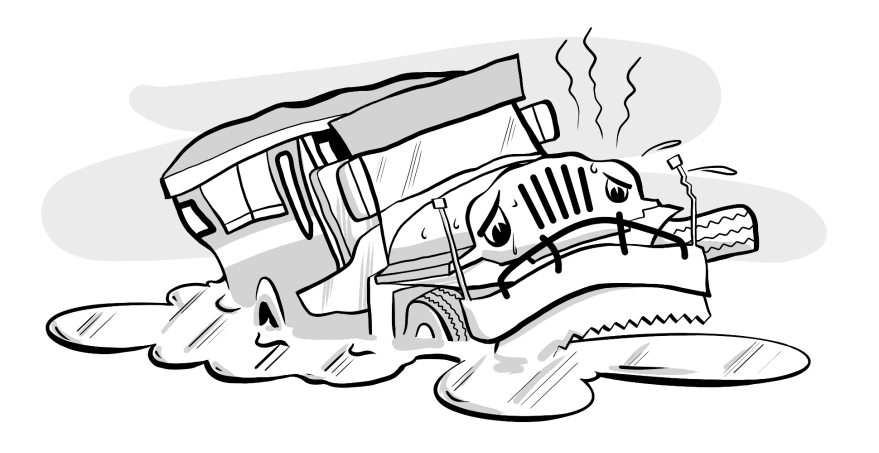Dethroning the king of the road


Major transportation lines were destroyed during World War II. As a temporary solution, several Filipinos invested in refurbishing dilapidated US military jeeps.
Sarao Motors was the first and formerly the biggest jeepney manufacturer in the country. It was founded in 1953 by businessman Leonardo Sarao, a mechanic and former calesa (horse-drawn carriage) driver, with a meager capital of P700. With this, his business grew into becoming a company.
Sarao reconfigured the jeepney to accomodate more passengers. Metal sheets decorated in vibrant colors with ornaments were used as its roof. A horse miniature was installed atop the jeepney’s hood to symbolize the calesa which is considered the first king of the road. The design of the jeepney was based on the color and form of the calesa. Since then, it has been dubbed as the new “king of the road.”
In the 1960s, the company employed more than 300 workers. Until the 1970s, the assembly plant manufactured up to 10 vehicles a day. In the 1980s, however, its production has slowed down to rising production costs and fewer franchises issued by the government. The decline was also attributed to the global financial crisis which has resulted in the depreciation of peso and tripled the price of secondhand engines from Japan.
In 1995, the Land Transportation Office stopped the issuance of franchises to jeepney lines as it opened up franchises to Tamaraw FX taxis (manufactured by transnational firm Toyota) and inaugurated the Light Rail Transit. A more stringent registration application process was also implemented by the government at that time. It was then that Leonardo Sarao left management of the company to his son Edgardo.
Amid the continuing decline, Edgardo was compelled to temporarily halt the production of the company and retrench 250 of its workers in October 2000. After a few weeks, the company resumed its production with only 50 employees. At that time, only an average of three jeep units were produced weekly.
In the face of Duterte’s scheme to phaseout older jeepneys under the guise of “modernization,” Sarao Motors was compelled to enter into a joint venture with Le’ Guider International (a company owned by businessman Youssef Ahmad), to manufacture electronic jeepneys (e-jeepneys). Instead of an engine, e-jeepneys are powered by a permanent magnetic motor that is made of neodymium, a rare-earth magnet whose extraction and production is dominated by China. Last year, 80% of its global supply was produced by China.
An e-jeepney unit, on average, costs P1.4 million. This is way more expensive than a traditional jeep which only costs P400,000 per unit. The bogus modernization scheme will certainly leave drivers and operators bankrupt and buried in debt, and will subsequently result in fare hikes.
